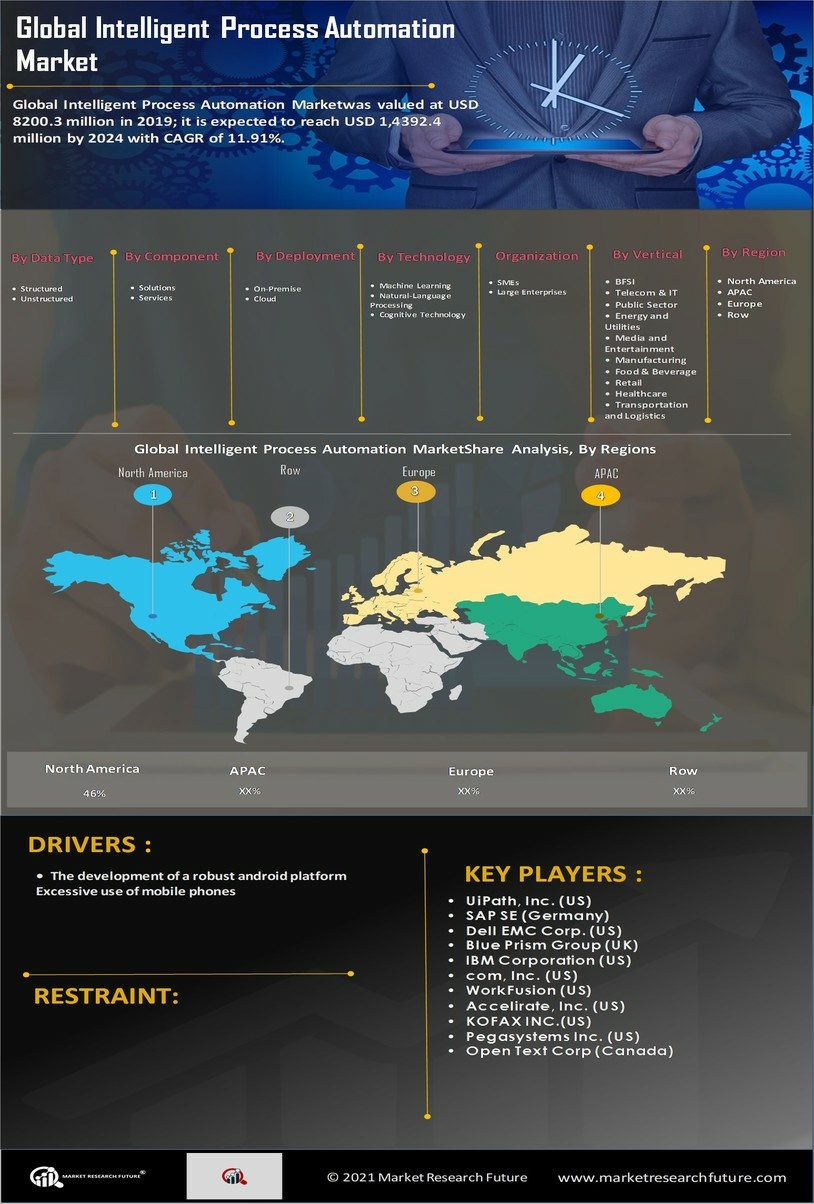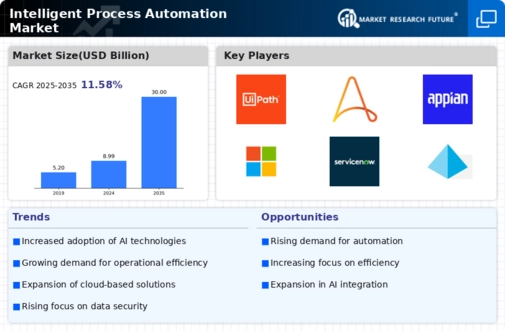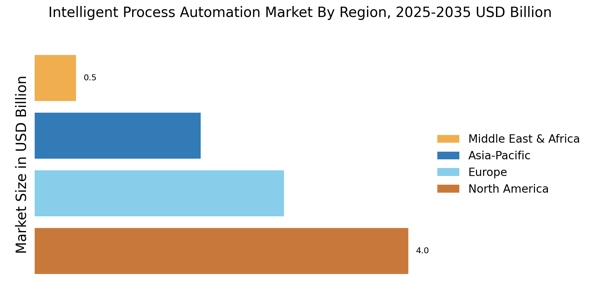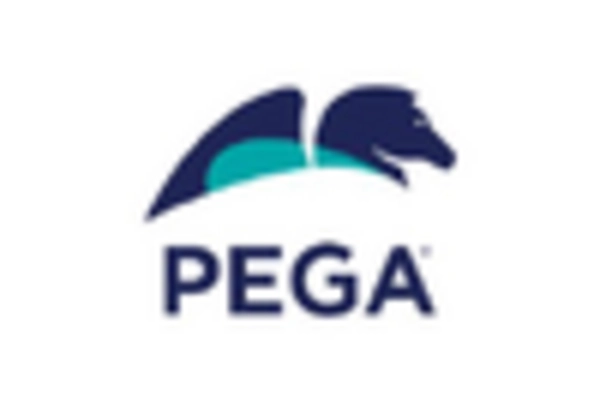Integration of Advanced Technologies
The integration of advanced technologies is a pivotal driver in the Intelligent Process Automation Market. The convergence of artificial intelligence, machine learning, and robotic process automation is enabling organizations to automate complex tasks that were previously labor-intensive. This integration not only enhances the capabilities of automation solutions but also allows for real-time data analysis and decision-making. As businesses increasingly recognize the potential of these technologies, the market is projected to expand significantly. Recent estimates suggest that the market could reach a valuation exceeding 15 billion by 2026. This growth is indicative of the industry's shift towards more sophisticated automation solutions that can adapt to dynamic business environments.
Need for Enhanced Customer Engagement
The need for enhanced customer engagement is driving growth in the Intelligent Process Automation Market. Organizations are increasingly recognizing that automation can play a crucial role in improving customer interactions and satisfaction. By automating routine customer service tasks, businesses can provide faster responses and personalized experiences. This shift is supported by data indicating that companies utilizing intelligent automation in customer service report a 40% increase in customer satisfaction scores. As customer expectations continue to evolve, the demand for automation solutions that enhance engagement is expected to rise, potentially leading to a market expansion of over 18% annually in the coming years.
Emphasis on Data-Driven Decision Making
In the Intelligent Process Automation Market, there is a growing emphasis on data-driven decision making. Organizations are increasingly leveraging automation to gather, analyze, and interpret vast amounts of data, which facilitates informed decision-making processes. This trend is particularly relevant as businesses strive to enhance their competitive edge through insights derived from data analytics. The ability to automate data collection and reporting processes not only saves time but also improves accuracy. As a result, the Intelligent Process Automation Market is likely to see a rise in demand for solutions that integrate data analytics capabilities, with market forecasts suggesting a potential increase in market size by 20% over the next few years.
Focus on Compliance and Risk Management
The focus on compliance and risk management is a significant driver within the Intelligent Process Automation Market. Organizations are increasingly required to adhere to stringent regulations and standards, which necessitates the implementation of automated solutions to ensure compliance. Automation can streamline compliance processes, reduce human error, and enhance reporting capabilities. Recent studies indicate that businesses employing intelligent automation for compliance purposes can reduce audit times by up to 50%. This growing need for effective risk management strategies is likely to propel the Intelligent Process Automation Market forward, with projections suggesting a market growth rate of approximately 22% as organizations prioritize compliance in their operational frameworks.
Rising Demand for Operational Efficiency
The Intelligent Process Automation Market is experiencing a notable surge in demand for operational efficiency. Organizations are increasingly seeking to streamline their processes, reduce costs, and enhance productivity. According to recent data, companies that implement intelligent automation can achieve up to a 30% reduction in operational costs. This drive towards efficiency is compelling businesses to adopt automation technologies that integrate artificial intelligence and machine learning. As a result, the Intelligent Process Automation Market is witnessing a robust growth trajectory, with projections indicating a compound annual growth rate of over 25% in the coming years. This trend underscores the necessity for organizations to remain competitive by leveraging automation to optimize their workflows and resource allocation.


















Leave a Comment